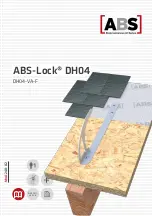
6
TO MINIMIZE RECOVERY TIME:
A. Use shortest length 1/4
"
(Inside Diameter) Refrigeration Hose on Suction Side of Recovery Unit.
B. Use an evacuated DOT Tank (90lb or larger, and rated for 550 PSI/38 Bar).
C. If refrigerant is clean, remove all suction side filters, screens, etc.
D. Remove all Schrader type valve cores and any valve depressors from hoses and service valves.
E. If Recovery Unit trips OFF on HIGH Pressure, change recovery cylinder.
F. When recovering large amounts of R410A, or if Recovering under very high ambient temperatures, we suggest
using the CPS MT69 (Molecular Transformator) which will increase the recovery speed.
1. Connect unit as shown in
Diagram 1
.
EU Note:
The recovery tank must be rated for 38 bar.
2. Open
Vapor Valve
on
Recovery Tank
.
3. Open
OUT Valve
on unit (Do
NOT Open IN Valve
at this time).
4. Push
Main Power
Switch “
ON
”.
5. When unit starts, open
IN Valve
on unit to start refrigerant flow.
6. Monitor amount of refrigerant in
Recovery Tank
.
WARNING: Do not over fill Recovery Tank
.
Note:
The unit is designed to handle large amounts of liquid refrigerant. If during direct liquid recovery the
compressor begins to make a slugging or hammering noise, meter in the incoming liquid by closing the IN valve
until the noise subsides.
7. Unit will run continuously.
• Monitor
IN Gauge
• Set
Main Switch
to
OFF
once required vacuum level is reached.
8. The following instructions are to reduce the amount of residual refrigerants:
• Disconnect the service hose from the TR600 IN port.
• Connect a service hose from the TR600 IN port to the Recover Tank Vapor Port.
• Set
Main Switch
to
ON
.
• Slowly open
Recovery Tank Vapor Port Valve
so
IN Gauge
reads 60-70 PSIG. Run for 30 seconds.
• Close
Recovery Tank Vapor Port Valve
. Turn the Power switch to OFF when a vacuum is reached on the LOW side
gauge.
RECOVERY PROCEDURE IS NOW COMPLETE. CLOSE ALL VALVES AND DISCONNECT HOSES
DIRECT VAPOR OR LIQUID RECOVERY
Diagram 1 - Direct Vapor Or Liquid Recovery
www.
.com
1.800.561.8187


























